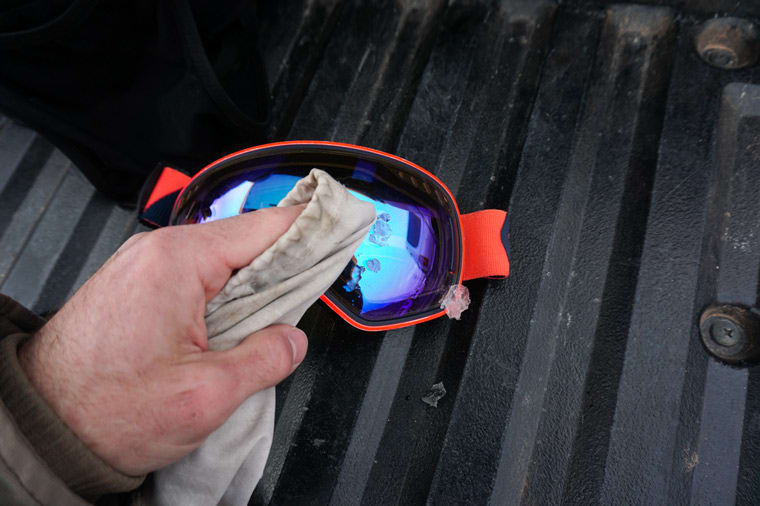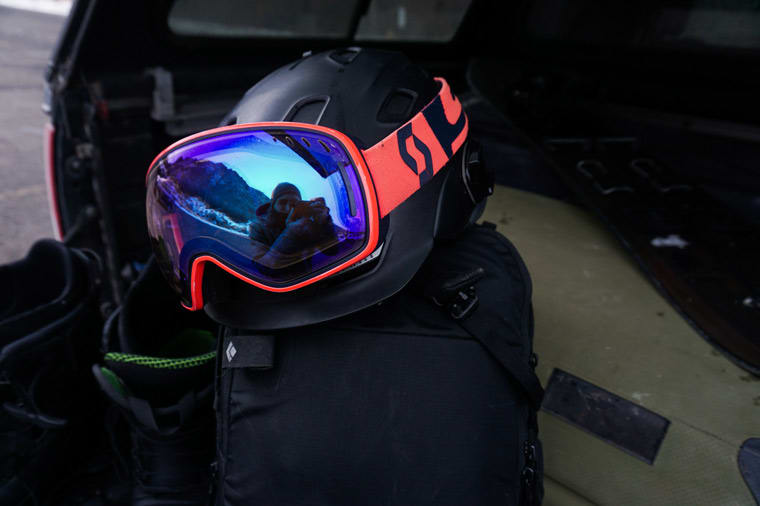Make It Last: Ski and Snowboard Goggles
Posted by Garson Fields on 19th Jan 2021
Make it Last is dedicated to getting the most out of your gear. This is our place to share knowledge acquired over years of abusing outdoor equipment, so you can learn from our experience and our mistakes. We want you to use your gear, patch it up until you can’t anymore, and enjoy it to the fullest. And when you finally need a new piece, we can help you with that too.

Whether you’re skiing in whiteout storm conditions or snowboarding under bluebird sunny skies, ski goggles are an essential, if underrated piece of snow sports equipment.
A quality set of snow goggles will easily last for years, but it’s also possible to ruin a brand new set of goggles before you even get to test them on the hill.
The difference is how you treat your goggles, and the keys are cleaning and storage. The problem is that goggle care isn’t necessarily a matter of common sense. But correctly caring for your goggles is straightforward once you understand the hazards at play.
Cleaning
This might be surprising, but the easiest way to ruin your goggles is by trying to clean them.
In particular, the trouble usually starts when you clean the inside of the lens.
All quality ski and snowboard goggles have a fog-resistant treatment applied to the inside of the lens. While this treatment is extremely effective, it’s liquid based and easily damaged.

Touching the inside of the lens with a dry goggle bag or eyewear cloth isn’t a problem. Wiping, on the other hand, can permanently damage your lenses in an instant.
If you get snow, dirt, or something else in your goggles, shake as much of the offending material out of the goggles as possible, then use your goggle bag to blot away any wet spots. Once they're dry, gently blowing on them will remove any lingering debris.
The outer lens is more durable, but it can still get scratched or damaged. Additionally, many lenses have hydrophobic coatings that can be stripped from the lens if you use a cotton rag, paper towel, or other inappropriate fabric for cleaning the lens. Always use the included goggle bag or a lens-safe microfiber cloth to clean your lenses, and make sure that it’s dry, as a wet cloth is more likely to damage lens coatings.
The final piece to consider is the goggle frame. Some people never clean their goggles, but at the end of the season, it’s a good idea to remove the lens, then rinse the frame under cold tap water. This will remove any sweat solids left over in the foam, which prolongs the life of the foam. Make sure to let the goggles fully air dry before reinstalling the lens, then put the goggles in a goggle bag before sticking them in your gear bag for the summer.
Proper Storage
Although goggle lenses aren't impervious to scratches, it typically takes a serious gouge to compromise your vision. And while you can’t always control when your goggles find a stray branch, how you store them is entirely on you.
Countless goggle lenses get wrecked every season when people leave their goggles on their ski helmets for storage or transport. The simple fix is to make sure that you remove your goggles from your helmet at the end of the day and place them in a goggle bag. That ensures that your lenses won’t get mauled by the contents of your gear bag, or whatever's bouncing around in your trunk.

Fight The Fog
If your anti-fog treatment is in good shape and you're still dealing with fogged lenses, the culprit is almost always one of two factors. Thankfully, both can be fixed easily without spending a dime.
Air Them Out
Perhaps the most common cause of fogging is leaving goggles in your gear bag overnight.
Modern ski goggles use dual-pane lenses, which create a sealed pocket of air between the inner and outer lenses. When you sweat, some of that sweat turns to vapor, which finds its way into the sealed pocket between the lenses.

While skiing, that’s not a problem, since both the air pocket and the lenses are being warmed by your face. But when you throw your goggles in a bag and leave them overnight, the moisture stays trapped in between your lenses, instead of evaporating. The next morning when you head outside, the air pocket warms faster than the outer lens, and that moisture condenses on the lenses, just like a cold glass of water on a hot summer day.
The fix is to leave your goggles out to dry overnight. If you find yourself dealing with this issue on your first run, you may be able to return to the lodge to let your goggles dry out, but it can take a few hours, which could cost you your ski day. Get in the habit of pulling your goggles out of your ski bag every night and it won't be a problem.
Let Them Breathe
The other common cause of fogging is the easiest one to solve, because it’s not caused by your goggles at all.
Ski goggles have porous foam at the bottom and the top of the frame, which creates airflow when you start moving. That airflow is key to venting excess water vapor, which keeps your vision fog-free.
Pretty much all modern helmets are designed to aid airflow out of the top of the goggles. If your helmet doesn’t, it may be old enough to warrant replacing. It also won't do your goggles any favors in terms of fogging.
If you pull your balaclava or neck gaiter over the bottom of your goggles, you’re obstructing airflow into the goggles, and fogging is sure to follow. Make sure that there’s a gap between your face mask and your goggles, and you’ll enjoy a clear, unobstructed view of the hill.
In Closing
If you take care of your goggles, they’ll return the favor. Mind the lenses and be careful with storage, and you can expect them to provide a clear view of the hill for seasons to come.
About Campman
Campman is an outdoor retail store located in Salt Lake City, Utah, that specializes in gear and equipment for camping, skiing, backpacking, climbing, and everything in between. We understand that the difference between a bad memory and the adventure of a lifetime can come down to the gear you take with you when you head outdoors, and we want our customers to have the best experiences possible. When it comes to getting outside, we get it, and we’ll get you the gear you need to get there.
Questions? Feel free to contact us by phone at (801) 999-8117 or by email at sales@campman.com.
Share on:



